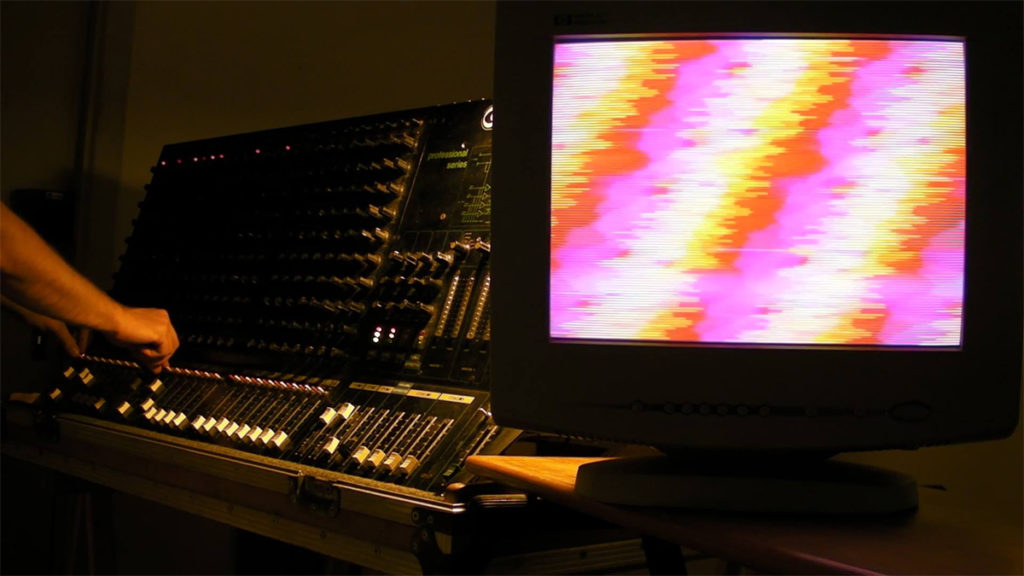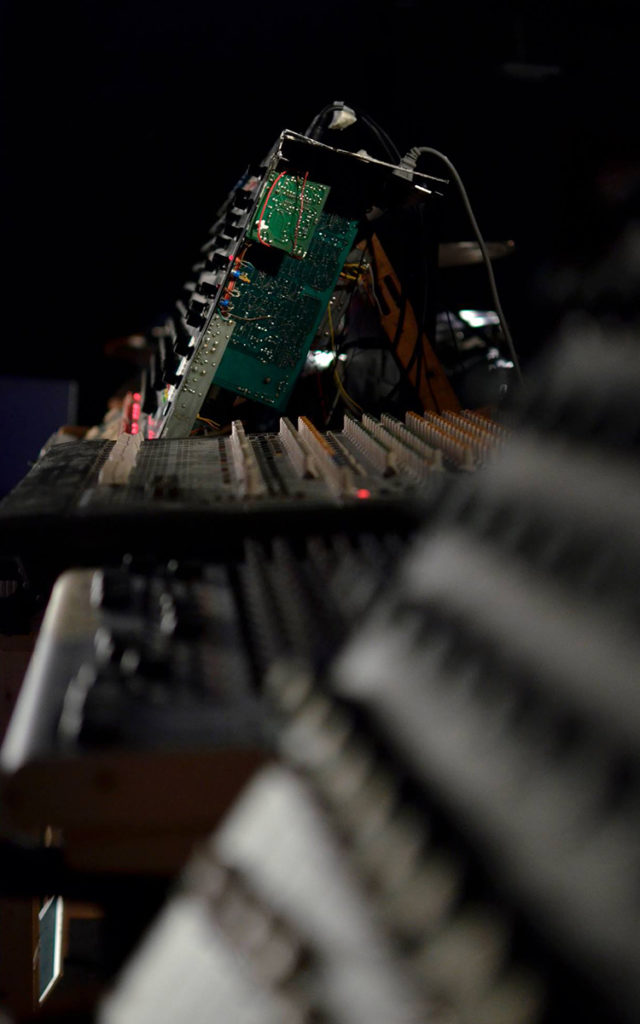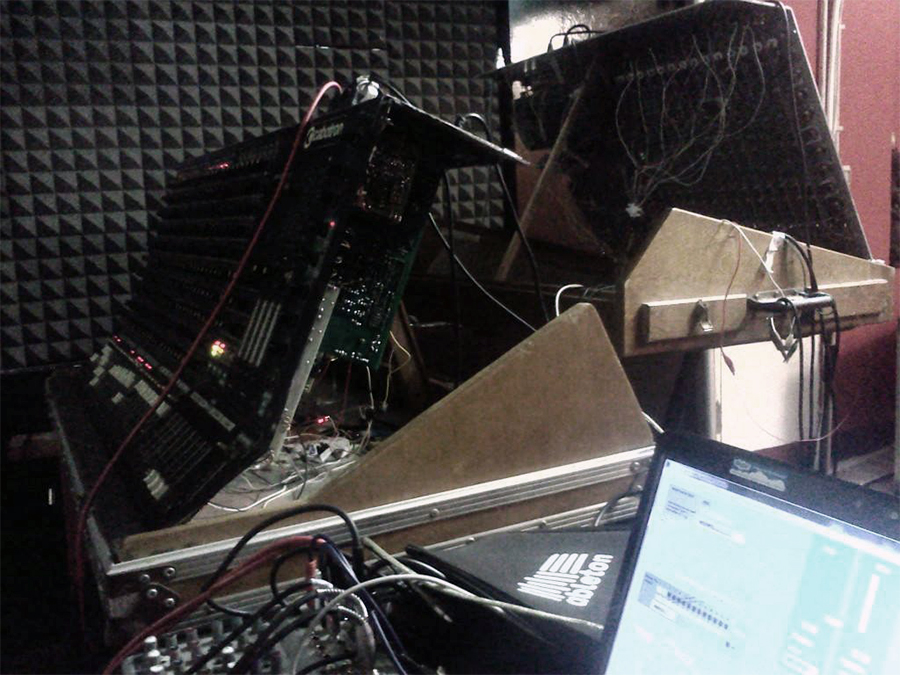What is Cabotronium?
Creative Chaos.
Cabotronium is a digitally controlled analog generator of audio/video complexity, that is not subdued to the control of the performer, can be considered a coherent system for generation and control of chaotic dynamics. The project is born in 2009 from a italian team formed by Emilio Pozzolini, Martino Sarolli and Alessandro Quaranta.

Cabotronium is named after the ‘Cabotron’ – the brandname of the old mixers that we transform into synthesizer through circuit-bending, in order to obtain a feedback amplification of the background noise of its electronic components. Thus, the generated signals are often complex waveforms with a strong noise component. The outputs channels of the mixer are then connected to the loudspeakers, as well as to the video monitors, so that the generated signals can be heard and seen at the same time.
The feedback loop inside the circuit involves an intrinsic instability of the signal, which tends to modulate even if the parameters of its electronic components are kept constant.
The act of “playing” the Cabotron (by using its faders, knobs and switching its channels on and off) is not an inflected form of the mechanistic paradigm, which is based on the causal nexus.

Thus, there is no constant and fixed relation between the player’s gesture and the sound/image which follows. In a complex system like the circuit-bent mixer, a linear variation of a parameter does not produce a corresponding linear variation of the signal: Cabotron is a singularities generator that is not subdued to the control of the performer.
Thus, in order to improve the degree of control on the signal generation process, we implemented a digital control system on the knobs, faders, ‘mute on/ mute off’ switches of the mixer.
We achieved this by making some external electronic components (relays, transistors, phototransistors) control the voltage of the faders, knobs and switches of the mixer.

Even if the digital control allows the performer to create high-level objects such as rhythm patterns (by repeatedly switching the channels on and off) and to recall a certain type of signal which had been previously generated, the unforeseeable and indeterministic behaviour of the customised mixer means that even the simplest, most straight-forward pattern, is going to feature some chaotic, out of control articulation.

Cabotronium can be considered a coherent system for generation and control of chaotic dynamics, but a performance by Cabotronium is, above all, an epic struggle between a complex and unpredictable system – the customised Cabotron- and a machine – the computer – that rigidly makes thousands of calculations per second in order to put order and hierarchies within the generation process.
